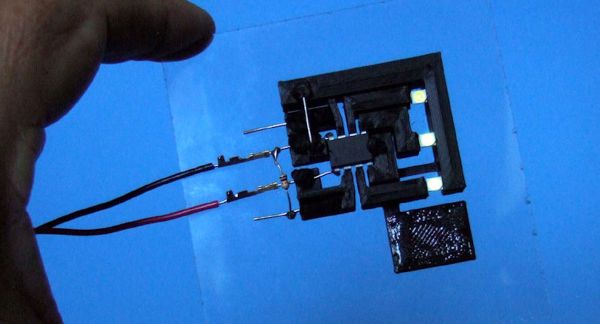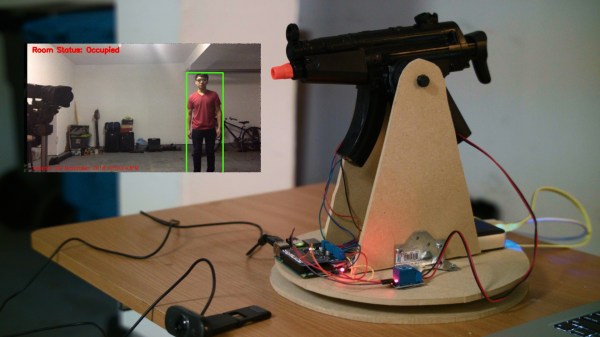In the eternal struggle for office dominance, the motion-tracking Airsoft/Nerf/whatever, the autonomous turret seems to be the nuclear option. [Aaron] and [Davis] built a motion-tracking turret that uses openCV to detect movement, before hitting a relay to trigger the gun.
There’s a Raspberry Pi controlling a Logitech C210 Pi-compatible webcam, with a stepper hat for the Pi controlling two NEMA steppers that aim the gun. The design is simple but elegant, with a rotating base and an assembly that raises and lowers the weapon.
The openCV intrigues us. We want to see a openCV-powered turret with color detection, so your own team doesn’t get blasted along with your hapless enemies. Or if guarding your cubicle, how about a little openCV facial recognition?
If you want to take a stab at your own, [Aaron] and [Davis] show how they built their project in their Hackaday.io page and their Python script can be found on GitHub. Otherwise, check out the Counter Strike Airsoft robot, the Airsoft sentry gun, and the Nerf turret powered by Slack we published previously. Continue reading “OpenCV Turret Tracks Motion, Busts Airsoft Pellets” →













